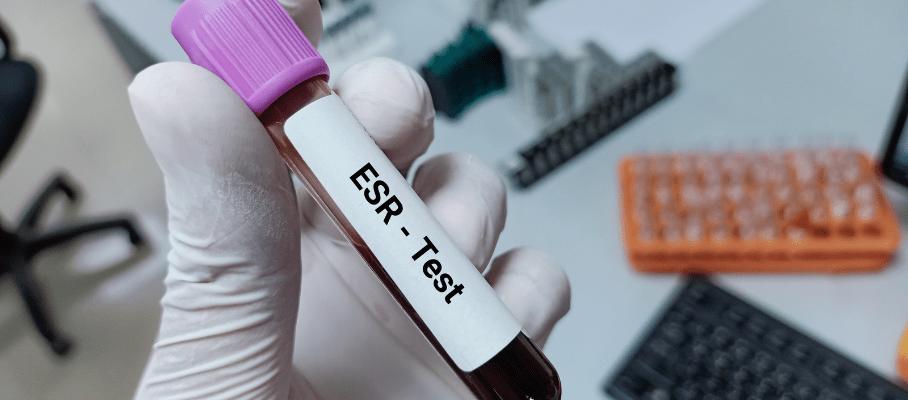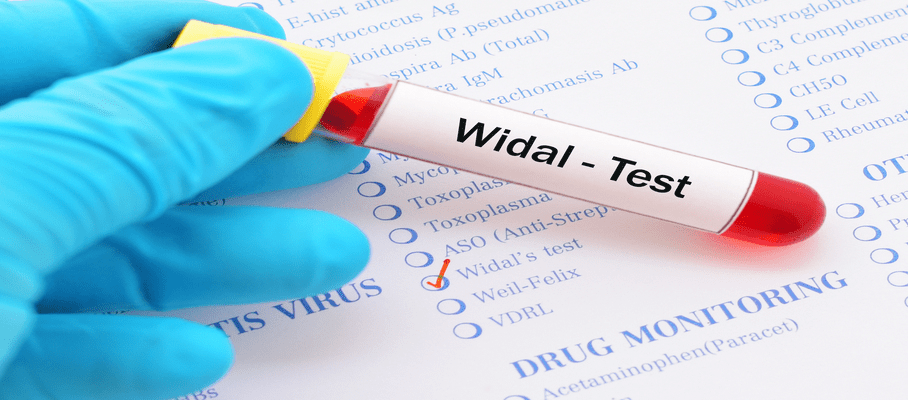Preventive Healthcare
The 14 Most Common Types of Cancer

Table of Contents
Introduction
Cancer remains one of the leading causes of death worldwide, with over 20 million new cases diagnosed annually. While there are over 100 different types of cancer, some are far more common than others. Understanding the most prevalent types of cancer is crucial for raising awareness, promoting early detection, and ultimately improving outcomes. In this article, we'll provide an overview of the 14 most common types of cancer, their risk factors, symptoms, and the importance of timely diagnosis and treatment.
Understanding cancer basics
Before diving into the list of types of cancer, it's important to grasp the fundamentals of how cancer develops. Cancer occurs when abnormal cells grow uncontrollably, invading surrounding tissues and potentially spreading to other parts of the body through the bloodstream or lymphatic system. While each cancer type has its unique characteristics, they all stem from this basic process of unregulated cell growth. Many cancers result from a complex interplay of genetic, environmental, and lifestyle factors. Early detection through regular screenings and awareness of warning signs plays a vital role in successful treatment.
Non-melanoma skin cancer
Non-melanoma skin cancers, including basal cell carcinoma and squamous cell carcinoma, are the most common type of cancer overall. However, they are often excluded from lists of types of cancer due to their high incidence and low mortality rates. Risk factors include:
- Excessive UV exposure from the sun or tanning beds
- Fair skin that burns easily
- History of sunburns
- Older age
These cancers are highly treatable when caught early. Treatment options may include excision, cryotherapy, or topical medications.
Breast cancer
Breast cancer is the most common type of cancer in women worldwide.
Risk factors include:
- Being female
- Older age
- Family history of breast cancer
- Certain inherited genes (BRCA1/BRCA2)
- Obesity and lack of physical activity
Symptoms may include:
- A lump or thickening in the breast
- Changes in breast size, shape, or skin texture
- Nipple discharge or inversion
Regular mammograms and self-exams are crucial for early detection. Treatment options vary based on the stage and type of breast cancer.
Lung cancer
Lung cancer is a leading cause of cancer deaths globally. Smoking is the primary risk factor, responsible for about 80% of lung cancer cases. Other risk factors include exposure to secondhand smoke, radon, asbestos, and air pollution. Symptoms often don't appear until the disease is advanced, but may include:
- Persistent cough
- Chest pain
- Shortness of breath
- Coughing up blood
Treatment for lung cancer depends on the specific type (non-small cell or small cell), stage, and the patient's overall health. Options may include surgery, chemotherapy, radiation, targeted therapy, and immunotherapy. Quitting smoking is crucial to reduce risk and improve treatment outcomes.
Prostate cancer
Prostate cancer is the second most frequent cancer diagnosis in men worldwide. Risk factors include:
- Older age (over 50)
- Family history
- African ancestry
- Obesity
Early prostate cancer usually has no symptoms. More advanced cancers may cause issues like trouble urinating, decreased force in the urine stream, blood in the semen, bone pain, and erectile dysfunction. The prostate-specific antigen (PSA) blood test and digital rectal exam (DRE) can help detect prostate cancer early. Treatment options include active surveillance, surgery, radiation, hormone therapy, and chemotherapy.
Colorectal cancer
Colorectal cancer, which includes colon and rectal cancers, is the third most common type of cancer.
Risk factors include:
- Older age (over 50)
- Inflammatory bowel disease (IBD)
- Family history of colorectal cancer
- Obesity and sedentary lifestyle
- Diets high in red and processed meats
Symptoms may include rectal bleeding, blood in the stool, abdominal pain, and changes in bowel habits. Screening tests like colonoscopies can detect precancerous polyps early. Treatment usually involves surgery and may include chemotherapy, radiation, or targeted therapy.
Melanoma
Melanoma, the most serious form of skin cancer, develops in the melanocytes that produce skin pigment. Risk factors include:
- Excessive UV exposure
- Having many moles or unusual moles
- Fair skin, freckling, and light hair
- Family history of melanoma
The ABCDE rule can help you identify potential melanomas: asymmetry, border irregularity, colour variation, diameter over 6 mm, and evolving size or shape.
Prevention centres on limiting UV exposure and regularly checking the skin for changes. Early-stage melanomas are highly treatable with surgery, while advanced cases may require immunotherapy, targeted therapy, or chemotherapy.
Bladder cancer
Bladder cancer typically begins in the cells lining the bladder. Risk factors include:
- Smoking
- Exposure to certain chemicals
- Chronic bladder irritation and infections
- Prior cancer treatment (radiation to the pelvis)
Symptoms include blood in the urine, frequent urination, and pain during urination. Diagnosis involves cystoscopy and biopsy. Treatment options include surgery, intravesical therapy, chemotherapy, and immunotherapy, depending on the stage and grade of the cancer.
Non-Hodgkin's lymphoma
Non-Hodgkin's lymphoma is a common cancer that starts in the lymphatic system. Risk factors include:
- Older age (over 60)
- Certain infections (e.g., HIV, EBV)
- Autoimmune disorders
- Exposure to chemicals like benzene
Symptoms can include enlarged lymph nodes, fever, night sweats, weight loss, and fatigue. The diagnosis typically requires a lymph node biopsy. Treatment depends on the specific NHL subtype and stage, but often includes chemotherapy, radiation, immunotherapy, or targeted therapy.
Kidney cancer
Kidney cancer, also called renal cell carcinoma, tends to affect older adults. Risk factors include:
- Smoking
- Obesity
- High blood pressure
- Family history of kidney cancer
- Certain inherited syndromes
Symptoms may include blood in the urine, a lump in the abdomen, back pain, fatigue, and unexplained weight loss. Treatment usually involves surgery to remove part or all of the affected kidney. Targeted therapy, immunotherapy, and radiation may also be used.
Leukaemia
Leukaemia is a type of cancer that affects the blood and bone marrow. There are several types, each with different treatment approaches. Risk factors can include previous chemotherapy, Down syndrome, and exposure to certain chemicals. Symptoms may include:
- Fatigue and weakness
- Frequent infections
- Easy bruising or bleeding
- Enlarged lymph nodes or spleen
The diagnosis involves blood tests and a bone marrow biopsy. Treatment typically includes chemotherapy, targeted therapy, radiation, or stem cell transplantation.
Pancreatic cancer
Pancreatic cancer is difficult to detect early, making it one of the most lethal types of cancer. Risk factors include smoking, chronic pancreatitis, diabetes, obesity and family history. Symptoms, when present, can be vague:
- Abdominal or back pain
- Jaundice
- Loss of appetite
- Unexplained weight loss
Treatment options are determined by stage but may include surgery, chemotherapy, radiation, and targeted therapy.
Thyroid cancer
Thyroid cancer occurs in the butterfly-shaped gland at the base of the neck. Risk factors include radiation exposure and certain inherited genetic syndromes. Symptoms may include:
- A lump or swelling in the neck
- Hoarseness or difficulty swallowing
- Neck or throat pain
Most thyroid cancers are highly treatable, especially when caught early. Treatment typically involves surgery, often followed by radioactive iodine therapy or hormone suppression.
Liver cancer
Liver cancer includes hepatocellular carcinoma and bile duct cancer. Risk factors include chronic hepatitis B or C, cirrhosis, and excessive alcohol consumption. Symptoms often don't appear until later stages, but may include:
- Abdominal pain or swelling
- Unexplained weight loss
- Jaundice
- Nausea and vomiting
Treatment options depend on the stage and may include surgery, liver transplant, ablation, radiation, chemotherapy, and targeted therapy.
Endometrial cancer
Endometrial cancer starts in the lining of the uterus and is the most common gynaecologic cancer. Risk factors include obesity, diabetes, hormone therapy, and a family history of Lynch syndrome. Symptoms may include:
- Abnormal vaginal bleeding or discharge
- Pelvic pain
- Unintended weight loss
Treatment usually involves surgery (hysterectomy), and may include radiation, chemotherapy, and hormone therapy.
5-year survival rates overview
The 5-year survival rates for various cancers vary significantly depending on factors like:
- Stage at diagnosis
- Cancer type and subtype
- Patient age and overall health
- Treatment response
Non-melanoma skin cancer and thyroid cancer have very high survival rates, often near 100% due to early detection. Conversely, pancreatic cancer has one of the lowest survival rates at approximately 11.5%, primarily due to late diagnosis. Cancers like breast, prostate, and melanoma have relatively high survival rates, especially when detected early. However, cancers such as lung and liver cancer tend to have poorer survival rates, reflecting challenges in early detection and effective treatment.
Takeaway: Importance of awareness and early detection
Awareness of cancer risk factors, signs, and symptoms is crucial for prevention and early detection. Lifestyle choices like avoiding tobacco, maintaining a healthy weight, protecting your skin from the sun, and getting recommended cancer screening tests can lower your risk for many common types of cancer. If you notice any unusual changes in your body, don't ignore them. Talk to your doctor right away, as early diagnosis leads to more effective treatment.
FAQ
What is 90% of cancer caused by?
Environmental and lifestyle factors, rather than inherited genetics, are estimated to cause around 90% of all cancers. This includes factors like smoking, diet, obesity, and exposure to certain chemicals or viruses.
Why cancers are common?
Cancers are common due to the combined effects of increasing life expectancy, lifestyle factors (smoking, physical inactivity, etc.), and exposure to environmental carcinogens.
What are the 5 most common cancers?
The five most common types of cancer worldwide are breast, lung, colorectal, prostate, colorectal, and melanoma (skin). However, prevalence varies by country and demographic group.
What are the top 5 most treatable cancers?
The most treatable cancers when caught early are breast, prostate, thyroid, testicular, and melanoma. However, treatability depends on many individual factors.
At Metropolis Healthcare, we understand the importance of early cancer detection. As a leading chain of diagnostic labs across India, we offer accurate pathology testing and health check-up services to help you prioritise your health. Our team of qualified technicians can collect blood samples right in the comfort of your home. You'll receive your reports conveniently via email and on our user-friendly TruHealth app. With personalised care and reliable results, Metropolis empowers you to take control of your well-being. Book your health check-up today.

























